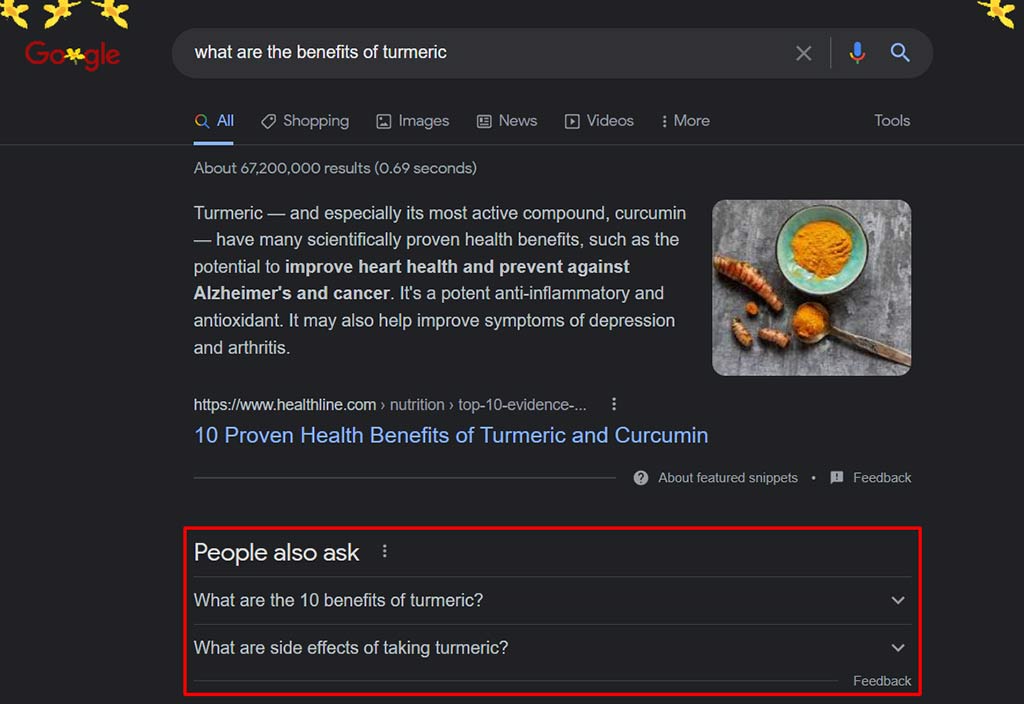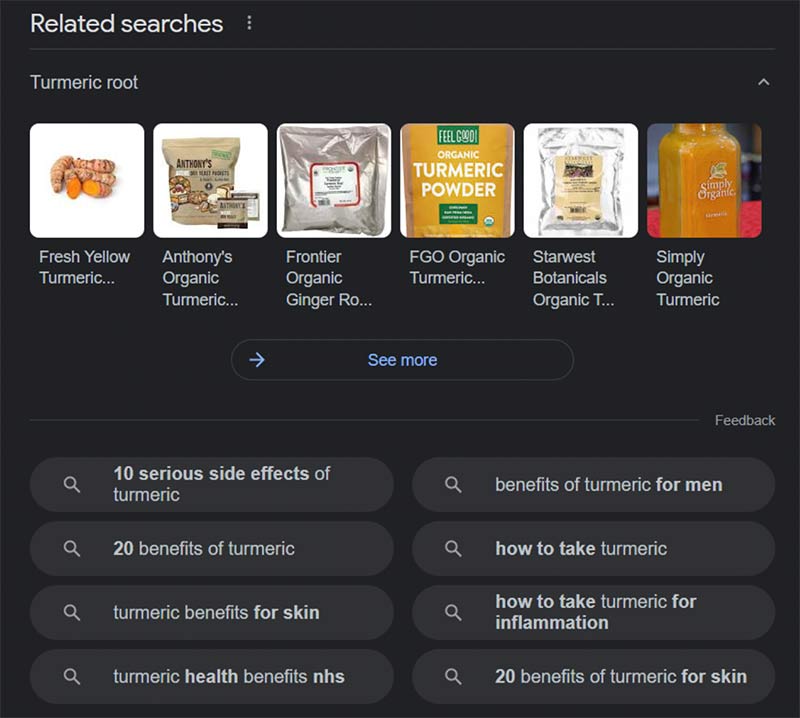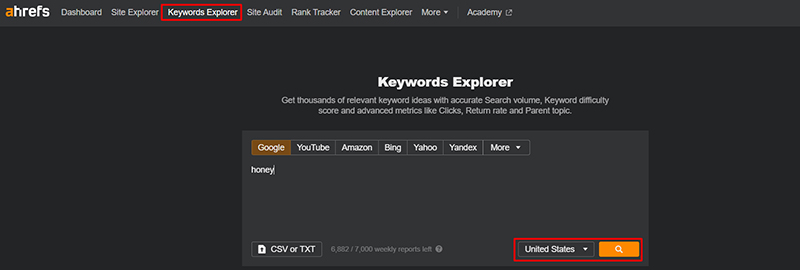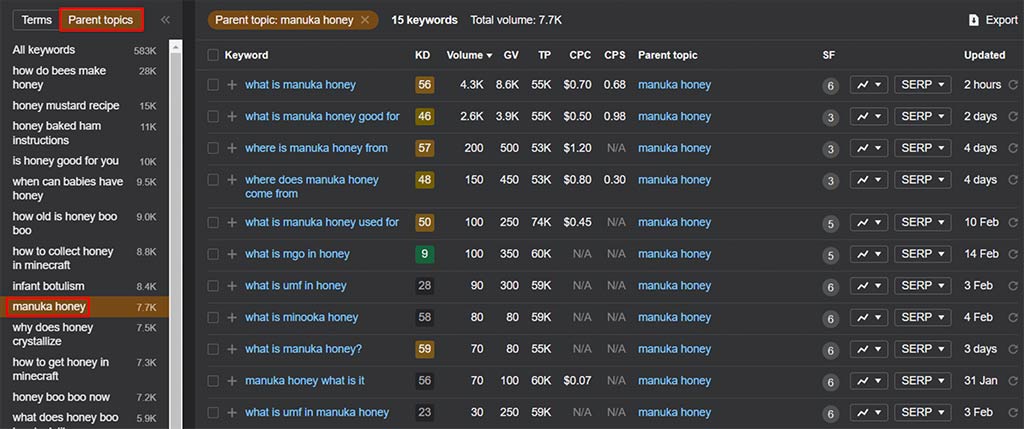Over the past few years, Google has focused on ranking pages based on the authority, relevance and trust conveyed by a website’s content and backlinks.
That being said, increasing a website’s authority, relevance and trust has become more difficult than ever before.
If you have concerns that your site is falling behind your competition when it comes to these three factors, you’ll want to follow the steps outlined in this case study.
Below, you’ll find how my team at The Search Initiative more than doubled our client’s organic traffic.

You’ll learn how to:
 Optimize your website to build E-A-T
Optimize your website to build E-A-T Add valuable informational content to rank for FAQ-related keywords
Add valuable informational content to rank for FAQ-related keywords Leverage your competitor’s link profiles to boost your own rankability
Leverage your competitor’s link profiles to boost your own rankability
But, before you implement the strategy used, it’s important you know the site’s background, goals, and the main challenges that you’ll need to overcome as well.
Table Of Contents
The Challenge
The primary goal for this campaign was to increase the traffic from non-branded search terms (i.e. keywords that don’t include your brand name in them).
Considering that the client is an independent insurance broker targeting the UK market, one of the biggest challenges we faced was the fact that the search volumes for many keywords in this niche are extremely low.

After all, most people tend to search for their life insurance only once in their life. However, what we quickly identified is that despite the low search volumes, the revenue potential for each visitor could be substantial.
As a YMYL (Your Money Your Life) website, the client’s site was lacking in E-A-T (Expertise-Authority-Trust), which is extremely important if you want to rank.

We focused on building more E-A-T by optimizing the content on the site with text that established the client as a trustworthy source of information. We also added informational content, specifically FAQs, to the client’s website to increase their chances of ranking for featured snippets. The final piece of the puzzle was to build the site’s authority with a competitor-based link-building strategy.
While E-A-T is essential for YMYL niches, it’s also an important factor for all websites that are looking to stay ahead of the competition.
Below, you’ll find out, step-by-step, how to achieve these results so you can replicate them on your own websites.
Optimizing For E-A-T (Expertise-Authority-Trustworthiness)
If the content on your website could potentially impact a person’s happiness, health, financial stability, or safety – then it qualifies for Your Money Your Life (YMYL).

In August 2018, Google introduced a new set of guidelines for it’s third-party Quality Raters (QRs) (QRs are real humans who check the quality of web pages) to measure the expertise, authority, and trustworthiness (aka E-A-T) of a site. The guidelines outline certain signals that the raters should look out for based on characteristics of the content along with other ranking signals like backlinks, performance etc.

In the case of this client, we needed to establish E-A-T within the insurance market so that Google and readers could see that the information provided was written by a credible source, from a respected firm.
What does E-A-T actually mean though? Let’s break it down:
Expertise – the content should reflect a higher level of knowledge about the subject at hand.
Authority – the content should be created by a credible source i.e. medical information should be written by a qualified medical professional as opposed to a general blogger.
Trust – the content should be factually correct, backed up by external sources to prove its trustworthiness.
There are certain steps that you can take to earn the trust of both Google and your visitors. Take a look at some ways that you can optimize your website for E-A-T.
Building Authorship
Including information about who’s responsible for the content on your website is crucial for building authorship. Why? Because it’s something that Google specifically asks its QRs to find.

Adding author information, like a short description and links to other online profiles, helps to raise your author’s (and your website’s) expert status. This helps Google (and your readers) see that the information that you’re providing is written by a credible, trustworthy source.
For example, if an author is visible on other authoritative pages within your niche (or their own social media channels), where they post (high-quality) content, then mentions or direct links from those sources can be beneficial for improving your website’s E-A-T.
Here are some tips to help build more authorship on your website:
 If your website has a blog section, make sure each article includes the author’s name (their byline)
If your website has a blog section, make sure each article includes the author’s name (their byline)

 Add a short author bio to any informational articles on your website – remember to add evidence of the author’s expertise within the subject i.e. any qualifications, credentials
Add a short author bio to any informational articles on your website – remember to add evidence of the author’s expertise within the subject i.e. any qualifications, credentials

 Add links to the author’s social media profiles (LinkedIn, Twitter, Instagram etc)
Add links to the author’s social media profiles (LinkedIn, Twitter, Instagram etc)

 Include a professional portrait photo (if possible)
Include a professional portrait photo (if possible)

 Add credentials of the author(s) to the “About” or “Our Team” pages – this should include information like:
Add credentials of the author(s) to the “About” or “Our Team” pages – this should include information like:
Full name
Headshot
Title / Position
A detailed bio that highlights their experience and expertise within the subject
Contact information (email address, links to social media profiles)
Here’s an example of the About page from What Hi-Fi:

Following the above steps makes it easier for both your readers and Google to establish the content creator’s E-A-T.
Adding Contact Information
User experience and transparency are important factors that Google considers when looking at E-A-T.
You should make it as easy as possible for your visitors to get in touch with you.
Here are some tips on how to do this:
 For eCommerce websites, remember to include your store’s policies on payment, exchanges, and returns.
For eCommerce websites, remember to include your store’s policies on payment, exchanges, and returns.

 For affiliate websites, ensure you’ve included a disclaimer about your affiliate programs.
For affiliate websites, ensure you’ve included a disclaimer about your affiliate programs.

 For YMYL websites, you should include “customer service information”.
For YMYL websites, you should include “customer service information”.

This includes contact information such as your address (if you have one), email address, telephone number, etc on your website.
Here’s an example from the TSI website, where we’ve included our contact information in the footer of each page.

A Positive Reputation
According to Google, a positive reputation is one of the characteristics of “high-quality content”.

Google instructs its quality raters to conduct “reputation research”. In other words, what people say about your business or brand online, matters.
Google is trying to calculate the overall public sentiment for your brand and website.
The odd negative review of a product or service isn’t going to hurt you – Google acknowledges that no website will have a perfect set of purely positive reviews.
But if, for example, a particular product is receiving mostly negative reviews, or your brand is being talked about negatively in the press – then this is likely going to affect Google’s assessment of the quality of your website.
You can’t control what people say or write about you, but you can monitor it. For example, you can set up a Google Alert to notify you when there are new mentions of your brand (or individuals from your website) online.
Learn more about how Google perceives reputation here and find out how to manage your online reputation in the video below.
Building Topical Authority
Topical Authority is all about a website’s perceived authority within a particular niche or subject. This signals to Google that you have a deeper understanding of your subject matter and therefore, can be trusted.
Having strong Topical Authority is vital if you’re looking to improve your E-A-T and, as a result, rank in the SERPs.

To build Topical Authority, you need to create content that showcases your knowledge across every aspect of your niche. In our client’s case, this was insurance.
Look at how your website’s content compares to that of the competition – i.e. identify information that is missing from your website but is included in your competitor’s sites.
To find your main competitors, grab the top-ranking websites for the primary keywords that you want to target. Remember to only include websites that are closely related to yours.
For example, if you had a website where you review smartphones, you should only include websites that also publish smartphone reviews, and not an eCommerce store selling smartphones.

Once you have your list of competitors, use Ahrefs’ Content Gap tool to find keywords that they’re ranking for, but you aren’t.

This will give you a list of all keywords that you’re missing out on. Now, some of these may not be as relevant to your site – so you can filter them via the “All intersections” drop-down by selecting only the keywords that more than one of your competitors is ranking for.

You can further filter this list to highlight the types of phrases that you would normally target. In the case of a tech review website like tomsguide.com, you may choose to search all keywords that include the key commercial phrase “best”. However, you can also filter your search for more informational keywords by using the phrase “how”.

It’s important to remember to cover all bases of the user’s journey. For example, a Law firm will have service pages that target specific commercial keywords like “personal injury lawyer london”. But to build Topical Authority, you’ll also want to target informational keywords that help support these pages e.g. “what is personal injury law”.
You now have a list of relevant keywords that you can create content around to further expand your site’s Topical Authority.
To find out more about Topical Authority, watch this interview with Koray Tugberk.
Reviewing & Updating Old Content
As “freshness” is one of the ways Google judges the quality of content, regularly updating older content is a good way to get back on the search radar. Doing so can give you a ranking boost and subsequently increase traffic.
This is especially important for YMYL sites (it’s specifically mentioned in Google’s guidelines – see below), or for time-sensitive content where facts, regulations, etc may change over time.

For example, if you have a website where you review the latest turntables, you should avoid having articles like “Top 10 Turntables Under $500 for 2024”, as Google and your readers will see that it’s out of date.
For this example, one way to identify outdated pages is by using a site search like this:
site:yourdomain.com intitle:2021
Note: you can replace ‘2021’ with any year
In the example below, you can see that the site’s page title includes 2021 instead of 2022.

You should also update the “post-last-modified” date to be as recent as possible.
If your website primarily contains informational content, it’s important to make sure that you regularly review it to ensure that it’s as up-to-date as possible.
Content Optimization: Dealing With FAQs

Regardless of what kind of website you have, you’ll likely need to rank for informational keywords. For example:
 eCommerce – providing information about the product/service that you’re selling
eCommerce – providing information about the product/service that you’re selling Affiliate – providing information related to your niche
Affiliate – providing information related to your niche Content Publishers – providing information about the topics you write about
Content Publishers – providing information about the topics you write about Local Businesses – providing information about the services you provide
Local Businesses – providing information about the services you provide
Many informational keywords tend to be posed as questions – which means that you can add valuable content to your website to answer queries that users may have about what you’re covering.
Below, you’ll find out how to find FAQ keywords to target, how to optimize them to increase your chances of appearing as a featured snippet, and how to use structured data to markup your FAQs.
How To Find FAQs
Here are three simple ways to find FAQ related keywords to target on your website:

People Also Ask
To find potential FAQs using People Also Ask:
Enter a keyword that a user may ask about your topic or product into Google
Scroll down a little to see the People Also Ask results.

If you click on any of the results, Google will display a short answer to the question along with a list of additional related questions that people also ask.

You can repeat this process to delve deeper down the rabbit hole of People Also Ask questions!

Related Searches
To find potential FAQs using Related Searches, scroll down to the bottom of the search results page to find Related Searches.

Google presents these related searches to help searchers find more information that is related to their original search.
Ahrefs
To find potential FAQs using Ahrefs:
 Enter a keyword into the Keyword Explorer tool
Enter a keyword into the Keyword Explorer tool
Note: remember to select the correct target location before hitting Search

 Scroll down to the Questions report.
Scroll down to the Questions report.

 Click on View all. You now have a list of keyword ideas that are all phrased as questions.
Click on View all. You now have a list of keyword ideas that are all phrased as questions.

For example, the below list comprises search terms related to “manuka honey”.

Now that you have a list of FAQs that your audience is interested in, let’s take a look at where you should add them…
Where To Put Your FAQs
When it comes to placing your FAQs on your website, there are a few possible choices: adding FAQS to existing pages, or creating a dedicated FAQ page.
Here are some scenarios that you might encounter:
Important questions related to the same page/topic – add answers to your users’ most important/common questions to a relevant, existing page. This helps provide a better user experience because the user doesn’t have to look elsewhere to find the answer.
Lots of less important questions that are related to the same page/topic – in this case, you’re better off creating a dedicated FAQ page that answers these questions. You can then add an internal link from other relevant pages where needed.
Questions that require detailed answers – you can combine the above two by adding a brief answer to the question within an existing page, and then creating a dedicated page where you can go into more detail.
When it comes to deciding where you should include your FAQs, check your question in the SERPs to identify what kind of pages Google is already ranking i.e. is it included as a separate page? Or, is it included as part of a series of questions and answers?
Let’s look at the keyword “how to replace a needle on a record player”.
You can see that the top ranking results are all individual pages that answer this question in a lot of detail.

Therefore, you should also create a separate page which provides step-by-step instructions on how to replace the needle on a record player.
Now, let’s look at how you should tackle the optimization of your FAQs…
How To Optimize FAQs
Optimizing the frequently asked questions on your web pages for a chance to appear in the coveted featured snippet spot is all about making sure that you answer the question as clearly and simply as possible.

Why? Because being included in the featured snippet means your web page will appear at the top of the search results page. Taking up more real estate in the SERP will allow you to rake in those juicy clicks.
Before I go into how to do this, let’s take a look at what a featured snippet is.
What Is A Featured Snippet?
A featured snippet is a short snippet of text that appears at the top of the organic search results with the aim of answering the user’s search query straight away.
Here’s an example of what a featured snippet looks like:

The content from the snippet is taken directly from the web page itself.
When you click on the result, Google highlights the derived text:

Importantly, the length of the snippet is just a couple of sentences long. This is because Google wants to provide the most concise and clear answer to the user’s query as possible.
The power of a featured snippet spot is that if the user needs more information than what is provided in the snippet, they can click through to read on.
How To Optimize FAQs For Featured Snippets
When it comes to writing your answers to FAQs, you should make sure that your answers:
 Are short and easy to understand – provide a direct answer to the question – aim for no more than one or two sentences.
Are short and easy to understand – provide a direct answer to the question – aim for no more than one or two sentences.
This is because Google will not only use this answer to display in the featured snippet, but it will also likely be used for voice search answers.
 Are NLP-friendly – by this, I mean making it as easy as possible for Google to know that you’re answering a question.
Are NLP-friendly – by this, I mean making it as easy as possible for Google to know that you’re answering a question.
Google uses NLP (Natural Language Processing) techniques in its BERT algorithm to improve its understanding of natural language. With this, Google is much better at understanding user’s search queries and web content in general

But, there’s no harm in making the connection between a question and answer as clear as possible.
How do you do this?
Well, if you have the question “what is a featured snippet?”, the most natural way to let Google know you’re answering it, is to begin your answer with “A featured snippet is…”.

You’re essentially rephrasing the question into a simple statement that also includes the answer. This is exactly what the example from above does. Find out more about stealing featured snippets here.
Following these two simple points will help increase your chances of appearing in the featured snippet spot for long-tail, informational keywords.
How To Use Structured Data To Mark Up FAQs
Now that you’ve optimized your FAQs for your users by answering their prospective questions in a simple, easy-to-read way – it’s time to do the same, but for the search engines.

Why? Because if Google has a better understanding of your content, it makes it easier for it to rank it for the keyword you are targeting.
To do this, you will need to markup your content with Structured Data.
What Is Structured Data And Why Is It Important?
Structured data is a piece of code written in JSON-LD (JavaScript Object Notation for Linked Data) that is used to provide information about the contents of a web page for search engines.
There’s a schema markup for pretty much anything – from Products and Organizations to Recipes and Movies – find a full list of available schemas here.

You’re essentially formatting your content in a way that is easier for search engines to understand.
Google says markuping up your FAQs makes them more “eligible to have a rich result on Search and an Action on the Google Assistant, which can help your site reach the right users”.
It’s a pretty simple and effective way to bump your chances of ranking at the top of the search results pages.
When To Use FAQ Structured Data
As per Google’s guidelines, you should only use FAQ schema markup if your page has a list of multiple questions with answers.
If your page only has one question and users can submit their own answers, then you should use QA markup instead.

How To Implement FAQ Structured Data
Implementing FAQ structured data onto your web pages couldn’t be easier thanks to this FAQPage JSON-LD Schema Generator.
All you have to do is type in your question and answer (remember that these need to be exactly what you’ve put on your web page) and the tool will automatically generate the code for you.

Click Add another FAQ to markup all of the questions from your web page.
Here’s the structured data that was generated from the above example:
<script type="application/ld+json">
{
"@context": "https://schema.org",
"@type": "FAQPage",
"mainEntity": [
{
"@type": "Question",
"name": "How tall is The Shard?"
"acceptedAnswer": {
"@type": "Answer",
"text": "The Shard is 310 meters tall."
}
}
]
}
</script>Check out this article to learn more about the FAQ schema markup.
Remember, you can use Google’s Rich Results Test to make sure that there are no issues with your code.
Just select the Code tab, paste in the generated code, and hit TEST CODE.

As you can see, there are no issues with the generated code whatsoever…

Once you’re happy with your schema markup code, you can insert it anywhere between the <body> </body> tags of your HTML.
Now you know how to add and optimize your web pages with informational content whilst increasing your chances of ranking within the featured snippets. Let’s move on to building up your domain authority…
Competitor Based Link Building
Once you’ve perfected your content, the next step is to boost your web pages with a link building strategy that will help improve your site’s authority and ranking power.
At the start of the campaign, we identified that the site’s backlink profile and domain authority weren’t as strong as the competition. In other words, the competitors had more referring domains of higher quality than our client’s website.
One way to help understand how your website’s link profile stands against your competitors is to do a Link Requirement Estimation.
Here’s what you’ll need to complete this:
Ahrefs – you’ll use this SEO tool to extract information about your website and your competitors’ link profiles.
Link Requirement Estimation Template – make a copy of this
Find out how to complete your own Link Requirement Estimation below:
How To Find Your Competitors
There are two ways you can find your core competitors:
1. Using Ahrefs To Find Your Top Competitors
Enter your domain into Ahrefs’ Site Explorer tool and click on Organic search.

Make sure you’ve selected the main location/country that your website targets, in this case, I’ve selected the United Kingdom.

This is important because you only want to include the competitors who’ll directly rank against you in the SERPs for the location you’re targeting.
Scroll down further and you’ll see Ahrefs’ list of the Top 10 Competitors for your chosen location.

This list comprises “websites that rank in organic search results for the same keywords as the target website”.
2. Using Google Search To Find Your Top Competitors
If you don’t have Ahrefs, you can also find a list of competitors via a Google Search.
Search the main keyword(s) that you’re targeting on your website – these are the ones that you absolutely want to rank in the top positions for.
For example, Zara.com would likely want to target the keyword “women’s clothing”.

Make a note of the top 10 competitors that show up in the organic results.
Again, remember to ensure that you’re only including websites that are similar to yours. For example, if you see a Wikipedia page in the top 10 positions, and you run an affiliate blog or eCommerce store, then don’t include this in your list.
Link Requirement Estimation
Now that you’ve got your list of competitors, enter the domains into Column A in this template.
In the top navigation bar on Ahrefs, click More then Batch Analysis. Paste in your competitor’s domains and your own.
Remember to set the Target Mode to *.domain/* and click Analyze – this way you’ll get the stats for all

Click Export > Start Export to export the data.

From the exported spreadsheet, delete all columns except the following:
| Ahrefs Export Spreadsheet | Template |
|---|---|
| Target | Competitor Domain |
| Domain Rating | Domain Rating |
| Domains | Total Referring Domains |
| Ref domains Dofollow | # of Dofollow Referring Domains |
| Total Backlinks | Total Backlinks |
| Backlinks Nofollow | # of Nofollow Backlinks |
| Total Keywords | Total Keywords |
| Total Traffic | Total Traffic |
Paste your own website’s data into the row highlighted in purple. Paste your competitor information into the respective rows on the template.
This is what your template should look like:

The template will then show you the average and medians of each of the metrics from your competing domains to form a rough estimate of where your domain needs to be.
In this case, Zara.com is actually ahead of the pack. This is still useful as it still shows you where your site stands in relation to the competition.
If your domain was behind the competition, you now know:
 how many backlinks/ referring domains you’ll need to rank comfortably against your competitors (green row)
how many backlinks/ referring domains you’ll need to rank comfortably against your competitors (green row) how many backlinks/ referring domains you’ll need to catch up with them (blue row).
how many backlinks/ referring domains you’ll need to catch up with them (blue row).
Finding Link Prospects
Now that you know your top competitors and what it will take to outrank them, why not use them one more time to find new link prospects?
Using Aherfs’ Link intersect tool, enter your competitors’ domains along with your own.
Click Show link opportunities.

You’ll want to narrow down the results to look at the most common (and relevant) domains that your competitors have links from.
You can do this by filtering the results using the All intersections drop-down list and unselecting 1 and 2.

The idea here is that if most of your competition has a backlink from a particular site, it’s probably relevant and good enough for you to get one too.
A Social-Proof Link Building Strategy
After you’ve pooled together your list of link prospects, the next step is to go ahead and secure those backlinks with this social-proof link building strategy.
Finding Contact Information
The first step in this strategy is to find the contact information for the webmasters from your prospect pool.
Here’re a few ways you can do this:
Search their site: look for contact information on the prospect’s homepage or sitewide footer. If it’s not there, look for a “Contact Us” or “About Us” page.
Use email scrapers: scrapers like hunter.io extract email addresses from websites for you – all you have to do is type in the domain of the website you want the link from and the tool will show you all of the email addresses that it has found for it.

There’s even a Chrome extension that you can install which allows you to find email addresses with a single click.
Social profiles: reach out to the websites via the social pages of the company/brand and ask them to provide the best email address to reach them.
Try to find email addresses for people, not companies – this’ll come in handy later!
Writing The Perfect Outreach Pitch By Leveraging Social Proof
Once you’ve got the contact information, you’re going to write an outreach pitch. This pitch needs to be compelling and show the prospect why they should link to your website. How do you do this? One way is by leveraging the prospects’ need for social proof.

Social proof is a term used to describe how people mimic the actions of others to reflect what is perceived to be “correct behavior”.
An example of social proof is when a celebrity endorses a product – usually through their social media profiles – to encourage their fans to mimic their behavior by using/purchasing the product.
You can use this same technique when pitching to your list of prospects…
You can reach out to them to say that you can review their product in exchange for a backlink from their website.
Here’s what you’ll need to do:
 Identify the link targets from your prospect list who have a need for social proof – these are websites that may be product manufacturers/owners, course creators, service providers etc. Essentially, you’re looking for websites that will want their product or service to be seen in a positive light.
Identify the link targets from your prospect list who have a need for social proof – these are websites that may be product manufacturers/owners, course creators, service providers etc. Essentially, you’re looking for websites that will want their product or service to be seen in a positive light. Identify the kind of content you’ll create – You can offer to write a full review of their product or perhaps include their product as part of a “best of” listicle. With our audio equipment website, you may have a title like “Best In-Ear Wireless Headphones” or “Best In-Ear Wireless Headphones Under $100”.
Identify the kind of content you’ll create – You can offer to write a full review of their product or perhaps include their product as part of a “best of” listicle. With our audio equipment website, you may have a title like “Best In-Ear Wireless Headphones” or “Best In-Ear Wireless Headphones Under $100”.
This strategy works for both parties – you’re getting a backlink from a topically relevant website, and they’re getting a positive review of their product.
Here’s an example of an opening email that you might send:
Hello _____________,
I’m reaching out to you as I’m getting ready to publish an article about The Best [Products] in [Niche].
I came across [Your Product] while doing research for the article. If you’d be willing to link to our results, I would be more than happy to make a few edits and add your product to the list too, before publishing on [Date].
Look forward to hearing from you.
Best regards,
(Name)
But what about the other websites from your prospect list?
In these cases, you can still reach out to them with a general guest post/link placement pitch.
Here are some things to keep in mind:
Do your research – spend time on the site to identify the best place for them to link to you is. For example, if they have a blog section, are there any existing blog posts where a link placement to your website makes sense? If there isn’t one, can you think of an article idea that would be beneficial to the prospect’s website and their audience?
Make it personal – your email will likely get ignored if it sounds impersonal and generic. For example, comment on a particular post that the person you’re emailing has recently published to show that you’ve taken the time to get to their site.
What’s the incentive? – make it as clear and direct as possible why the prospect should link to your website. For example, are you filling a content gap by providing an article that their audience will benefit from? Have you found an out-of-date post on their website and are looking to provide an updated piece? In any case, explain why you are offering value to their website (and their audience).
When the prospect replies, you may need to negotiate the terms of the link placement with them i.e. whether you need to follow certain guidelines when pitching a new article, or where the link should be placed within the article.
The results of this competitor-based link-building approach speak for themselves – here’s how we’ve improved the client’s link authority over the past year.

The Results
Here’s an example of the kinds of results you can expect by following the three core strategies outlined above.
The graph taken from Ahrefs shows the number of keywords that the client was ranking for within the top 10 positions of Google.
The site’s keyword visibility in the top 10 positions of Google grew from 35 keywords in March 2021 to 353 keywords a year later – an increase of 908.50%!

When compared year-or-year, the organic traffic for non-branded keywords increased by 121.16%.

Conclusion
In this case study, you’ve found out how to:
 Optimize the content on your website to express E-A-T
Optimize the content on your website to express E-A-T Find, optimize and markup FAQs so that they have an increased chance of appearing as a featured snippet
Find, optimize and markup FAQs so that they have an increased chance of appearing as a featured snippet Leverage your competitor’s link profiles to find link prospects of your own
Leverage your competitor’s link profiles to find link prospects of your own
Don’t have the time and want someone to take care of your SEO for you? Don’t hesitate to reach out to my team over at The Search Initiative – we’d be more than happy to help boost your site’s SEO performance!

